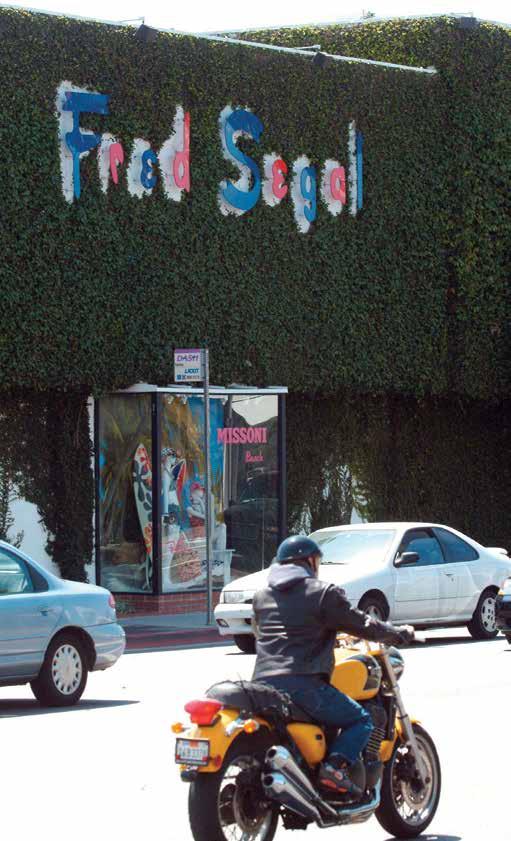l_____FRED S EG AL O N MEL RO S E
R E TA IL
54
RETAIL THER APY Before celebrity stylists, social media and influencers, Los Angeles retailers gave denim brands their big break. w o rd s _____ ANG E L A V EL A S QUEZ SOFIA V ERGA R A _____l OU TSIDE OF BA R N E Y S
T
he parking lot outside Fred Segal’s original Melrose location was hallowed ground for anyone with Hollywood ambitions in the 2000s. There, paparazzi waited for Paris Hilton to step out with an arm-full of shopping bags, and for Victoria and David Beckham to pull up in their not-so-inconspicuous convertible. Meanwhile on Robertson, Britney Spears shopped at 2:00 A.M. at Kitson, and three then-relatively unknown sisters, the Kardashians, opened a women’s boutique called Dash. And over at Barneys in Beverly Hills, Winona Ryder infamously helped herself to a five-finger discount. In short, Los Angeles’ retail scene was popping in the 2000s. And premium denim brands reaped the benefits of these retailers with celebrity cachet. As the curators of cool, American Rag, Fred Segal, Kitson, Rob Robinson, Scoop NYC and Barneys—on both coasts—made jeans by brands like 7 For All Mankind, Chip & Pepper, Citizens of Humanity, Earl Jeans and more, the new Hollywood status symbol. Before that, according to Adriano Goldschmied, the “godfather of denim” and House of Gold president, jeans were a commodity item in
the U.S. “Those stores elevated the image of denim,” he said. “They created a new emoticon in consumers and also they offered a lot of different brands to choose from.” “At the height of their powers, these stores were the official arbiters of taste,” added Brian Trunzo, head of sales for Informa Men’s. “From underground cool kids to mainstream trendsetters, they crossed the spectrum like no one else.” Premium denim brand Chip & Pepper organically grew a celebrity clientele for its vintage rock 'n' roll jeans and tops in the 2000s. Celebrities like Britney Spears and Beyonce shopped at the brand’s Melrose store, but its partnership with Barneys did what no single celebrity or PR company could do, co-founder Chip Foster said. “They would build your brand and support you,” he said. “Barneys was smart because if you sold to Barneys you had to hold off on selling to retailers like Nordstrom, but we were doing millions with them. There was no need to sell to anyone else. You walked onto the third floor of Barneys on Wilshire and it was just a massive Chip & Pepper store.” In its prime, Trunzo said stores like Barneys had cachet with “twenty-something aspirationRIVET NO.9 / APRIL 2020
al shoppers who listened to Kanye West and watched ‘Entourage,’ as well as the well-heeled women who ate at Cipriani and watched ‘Sex and the City.’” “These stores,” he added, “were incredibly nimble in appealing to the tastemakers of every tribe, really. They had the trust of the emerging brands, and it paid big dividends in the form of hype and major selling events.”
Waning stars Alas, a confluence of events, like the 2008 Great Recession and the subsequent retail downturn, led many of these megawatt retailers to lose their luster.








